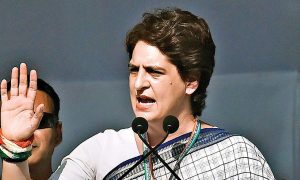The insurance regulator has allowed the general insurer to introduce technology-enabled add-on policies for own damage motor insurance policies based on the usage and driving history of the owners. Know how it will impact you
Gone are those days when you have to pay a fixed premium every year for your own damage motor insurance policy. Insurance Regulatory and Development Authority of India (IRDAI) has allowed the general insurer to introduce technology-enabled add-on policies for own damage motor insurance policies based on the usage and driving history of the owners. Soon, individuals have the flexibility to buy floater policies for multiple vehicles instead of separate policy for each vehicle, the regulator said in a recent notification.
Read More: Credit Cards UPI Linkage: EMI options, MDR charges and how will they work – Find out
“… as a step towards facilitating technology enabled covers, IRDAI has permitted general insurance companies to introduce the following tech-enabled concepts for the motor own damage (OD) cover: a) ‘Pay as you drive’, b) ‘Pay how you drive’, c) ‘Floater policy’ for vehicles belonging to the same individual owner for two-wheelers and private cars,” IRDAI mentioned in a notification released on July 6.
As the name suggests, ‘Pay as you drive’ cover will allow the users to pay for the insurance as per the usage. This cover may be defined as per the approximate declaration of the customer in terms of planned usage in the cover Year and can be tracked using technological support such as an app with geo-tagging. However, the Insurers would also have to clarify the process of settling a claim in event of the customer exceeding the declared usage,” explained Supriya Rathi- whole time director, Anand Rathi Insurance Brokers Pvt Ltd.
‘Pay how you drive’ add-on will depend on the driving behaviour of the owner. There will be an option for the customers to choose live-tracking of their driving in terms of speed and usage and other parameters. Using all these, the insurer can offer a motor cover with dynamic pricing.
Read More: Cheque Rules Changes for Bank of Baroda Customers; All You Need to Know
Similar to floater health insurance policy, ‘floater policy’ for vehicles will allow individuals who own more than one vehicle — two-wheeler or car— to opt for single motor insurance which will cover all their vehicles.
How this Move will Impact Motor Insurance Premiums
The introduction of these tech-enabled add-ons will bring more personalised pricing for motor insurance customers. “Currently, customers are classified into one of the several homogeneous strata and priced as per the average loss cost of that strata. With the new proposed add-ons, pricing will become more closely linked to an individual customer’s driving distance, low/high mileage as well as their driving habit, safe/un-safe driving,” said Kunal Jha, vice president, and head, motor products and actuarial, Digit Insurance.
After a two-year long coronavirus pandemic, there are thousands of people who do not drive cars regularly. However, they sill have to pay a hefty annual premium for their vehicles. With the new guidelines by the insurance regulators, these customers will have better control over the upfront insurance cost cost as the premium will be based on the usage.
“It is a win-win for customers who have more than one car or do not drive as much. For instance, if one person drives his car 200-300 kilometer per month and another person drives his car 1,200-1,500 kilometer per month, they do not have to pay the same premium under the ‘pay-as-you-drive’ model,” said Ashwini Dubey, head, motor insurance renewals, Policybazaar.com.
Similarly, between two customers who drive the same distance, for instance, 1,200 kilometer per year, the customer who drives more safely will pay lesser premium than the customer who drives relatively rashly. “Vehicles that are fitted with a telematics device collect a lot of valuable information from which driving habits can be ascertained. Having said that, consent would be required from the customer regarding data sharing,” added Kunal Jha.
What it Means for the Insurance Companies
“This move will also help insurer to do better risk selection as they will be able to identify good risks and adverse risks and thereby price premiums of the motor insurances more accurately,” Pooja Yadav, chief product officer, Edelweiss General Insurance told News18.com. The use of telematics will also help insurers estimate accident damages more accurately and reduce fraud by enabling them to analyse the driving data (such as hard braking, speed, and time) during an accident, she added.
How these Add-ons will be Implemented
Add-ons will be attached to respective base products and filed accordingly. Further guidance is awaited from the regulator on the same, said experts.





































